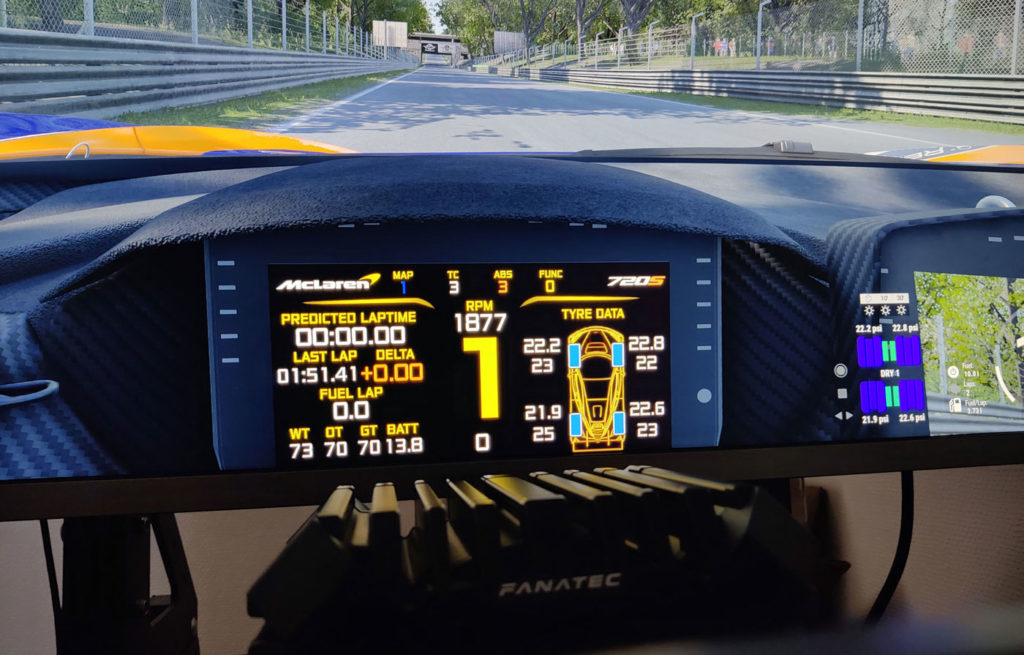Fanatec CSL-DD – Direct Drive Base Review
The Fanatec CSL-DD Wheelbase is the latest wheel base by Fanatec and is intended to close the gap between the entry-level products of the competition from Logitech and Thrustmaster to the high-end DDs from its own range and that of competitors. At €350 (5 Nm) and just under €500 (8 Nm), the CSL-DD currently has no competition in the direct-drive sector. This report will show how well it does and whether it has saved money in one or two places.
Unboxing
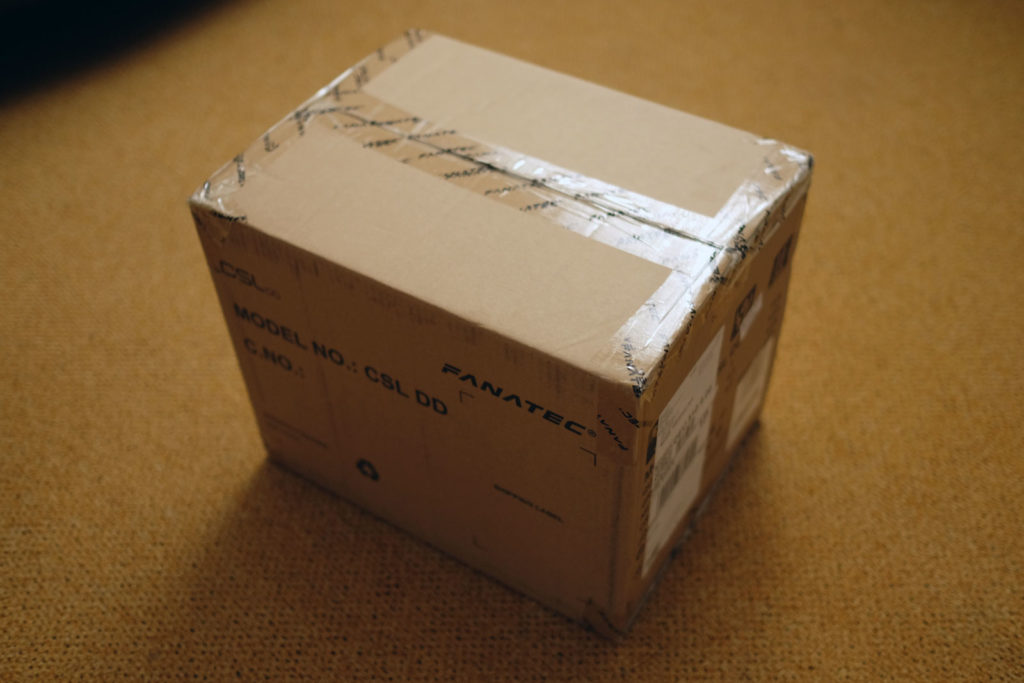


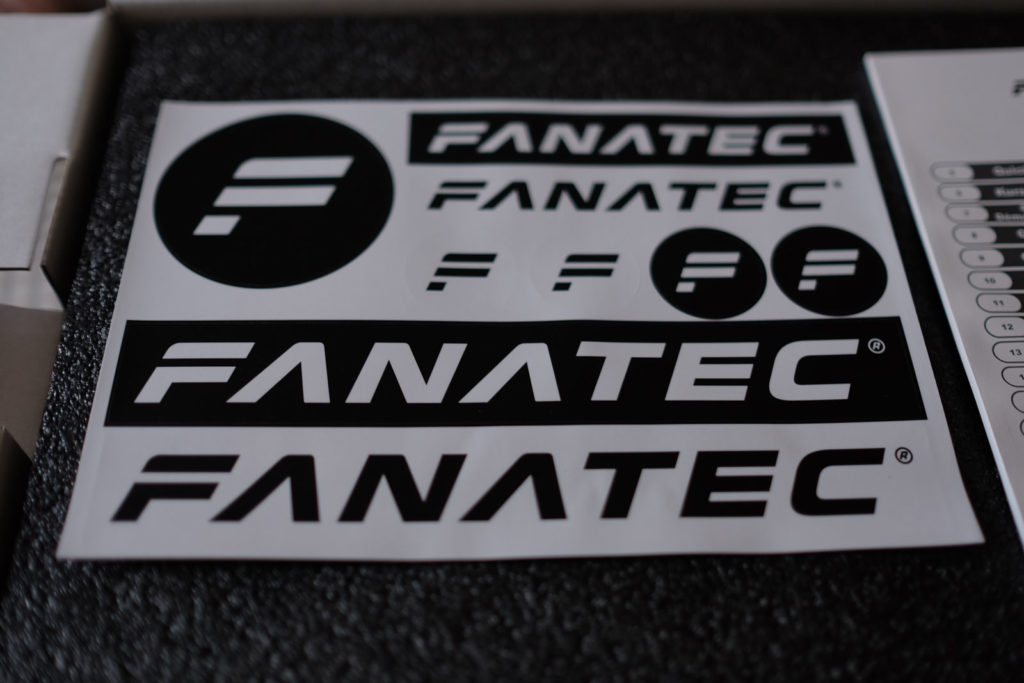
In typical Fanatec fashion, the package comes in a brown shipping box with Fanatec branding, each containing a white box for the boost kit and the base.
Scope of delivery
The package’s scope of delivery is very manageable and is composed as follows.
- CSL-DD
- Power supply with two detachable power cables for different countries (boost kit)
- USB A to USB-C cable for connection to the PC
- Four M6 sliding blocks for mounting
- Sticker set
- Instruction manual
Mounting
For mounting the CSL-DD, Fanatec has included four sliding blocks that can be inserted into the channels integrated into the design on the sides and bottom. They are designed without a spring and thus do not stay in position by themselves. Fanatec does not include suitable screws, so these should be obtained in advance (M6 screws are required). Also, unlike the former CSW series, there is no bracket included.
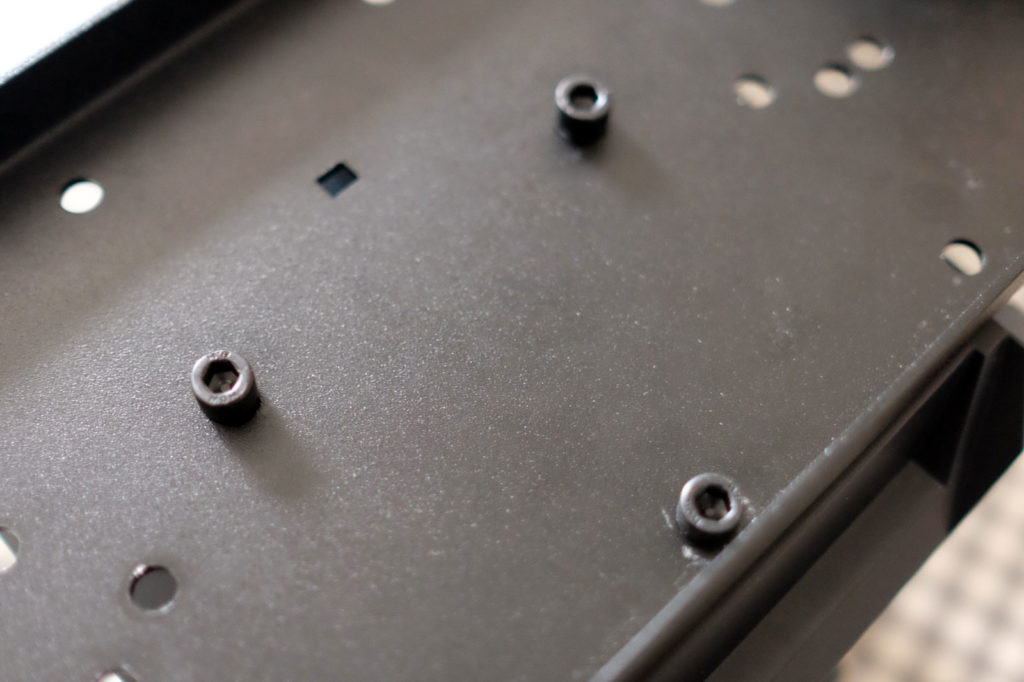

In this case, the base was installed on a Simetik Simrig. Since this has mounting holes for the familiar Fanatec arrangement, I pushed the sliding blocks into the appropriate places and fastened them with three M6 screws. As expected, there were no problems and the base was securely mounted after a few simple steps.
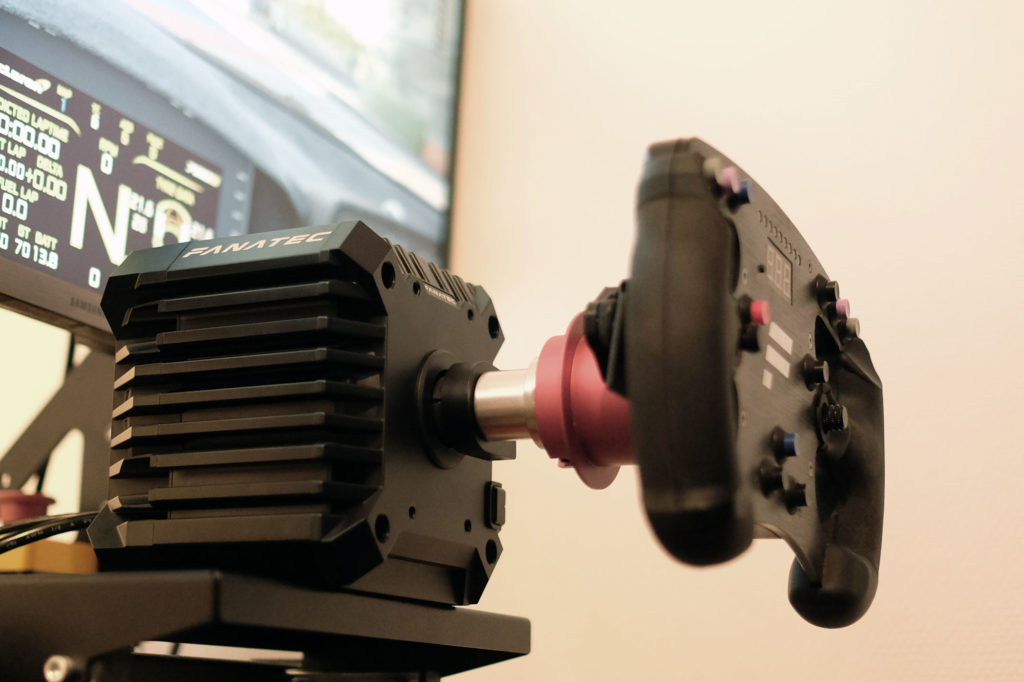

Optional peripherals like shifters and pedals can then be connected to the base. After connecting the USB-C cable between the base and the PC, which should be mentioned positively, and plugging in the power supply, the assembly is already finished.
Driver / Firmware Manager
The latest driver can be downloaded from Fanatec’s website: https://fanatec.com/eu-en/driver.
After the installation and the obligatory reboot of the system, the firmware of the individual components can be updated. You should follow Fanatec’s instructions including the warnings.

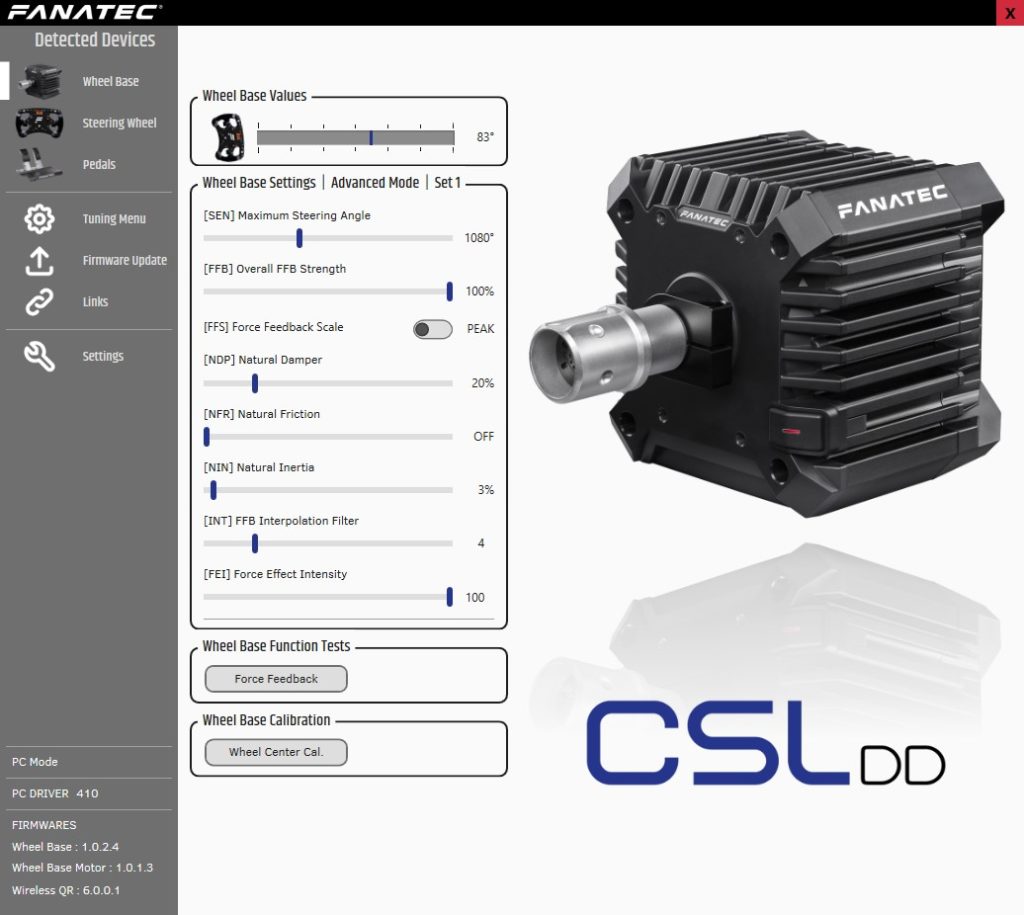
FFB – Settings
Fanatec has introduced two different tuning menus with the CSL-DD. In standard mode, only basic settings are available and only one profile can be selected. This is probably primarily aimed at beginners, who should be given an uncomplicated start into simracing.
If you want to make more complex settings, you have to activate the Advanced mode. This offers, as the name suggests, significantly more setting options and the saving of different profiles (for example, for different Sims and/or vehicles).
The following settings can be adjusted via the menu:
- [SEN] Maximum Steering Angle – Defines the maximum steering angle you can turn the wheel. The default setting is “Auto” in which the game takes care of a realistic steering angle for each car. This can be adjusted for personal preference or some games that don’t support “Auto”. Alower value makes the steering more direct.
- [FFB] Overall Force Feedback Strength – Adjusts the overall force feedback strength of all effects coming from a game equaliy. 100% will use the full torque the Wheel Base can produce, 50% will only result in half ofthe torque the Base could output. Different kind of effects like Force, Spring or Damper can be adjusted separately below.
- [FFS] Force Feedback Scale – PEAK (default); Allows maximum peak force, due to the nature of holding and peak forces this can cause non linearity during long sustained high holding forces. LINEAR: Reduces overall FFB force to a level which guarantees linear behavior between peaks and holding forces.
- [NDP] Natural Damper – Adjusts a constant damper which is not influenced by the game, default is 50% to prevent oscillations. In comparison to Natural Friction the resistance of the damper increases with the steering’s turning speed. At 100% the steering will have the most resistance and is very hard to turn. At 0% the steering wheel will have the least resistance, this can lead to oscillstions and bad behavior depending on the game and how strong the FFB is set to, use lower values with caution! Try to find a good balance between low resistance for fest reaction time and enough resistance to keep the behavior stable Suggested values are between 10-50% depending on the FFB strength and behavior.
- [NFR] Natural Friction – Adjusts a constant friction effect which is not influenced by a game, default is off.The setting can be used to prevent oscillations or simulate the steering rack of a car without power steering, In comparison to the Natural Damper, resistance of Friction acts more linear with different rotation speeds of the wheel. At 100% the steering will have the most resistance and is very hard to turn. At 0% the steering wheel will have the least resistance. Try to find a good balance between low resistance for the most feel and enough resistance to keep the behavior stable. A good window is between 0-15% for this setting depending on the FFB strength and behavior.
- [NIN] Natural Inertia – Natural Inertia simulates additional weight on the steering axis, higher values will make the wheel feel heavier than it is. This can help making Natural Friction feel less sticky. Inertia can hinder oscillations from starting but will make already happening oscillations worse. Too high settings can slow down reaction and reduce feel
. - [INT] FFB Interpolation Filter – This interpolation filter turns rough, low resolution game FFB into smooth effects.Higher values will increase smoothing, find a good sweet spot where FFB isn’t missing important details but doesn’t overwhelm with unnecessary noise.
- [FEI] Force Effect Intensity – Adjusts how intense or smooth the effects from a game will be. 100 is the most sharp and direct setting but can be very harsh and result in rattling depending on the game. 0 is very smooth with less rattle but subtle effects and feeling can get lost.
- [FOR] Force Feedback Strength – Adjusts the strength of Force Effects coming from a game, default is 100%. Games use this effect to control most of the FFB. Some games only use Force Effects, 100% will use the maximum torque selected by the overall strength [FF]. 50% will only use half of the torque selected by the overall strength [FF]
- [SPR] Spring Effect Stremgth – Adjusts the strength ofthe Spring Effects coming from a game, default is 100%. Sometimes used as a menu center spring or re-alignment force while driving. This is not a constant spring, it’s only controled by the game and will not result in any effect other than what the game outputs. 100% will use the maximum torque selected by the overall strength [FF]. 50% will only use half of the torque selected by the overall strength [FF].
- [DPR] Damper Effect Strength – Adjusts the strength of the Damper Effects coming from the game and FanaLab, default is 100%. Sometimes used to dampen oscillations or simulating the tyre resistance when standing still and turning the wheel. This is not a constant damper, it’s only controled by the game and will not result in any effect other than what the game outputs, 100% will use the maximum torque selected by the overall strength [FF]. 50% will only use half of the torque selected by the overall strength [FF],
- [SHO] Vibration Strength – Adjusts the vibration strength ofthe rumble motors placed inside the grips of ClubSport steering wheels. Vibration effects can be output from the game or the Fanalab Software. This setting will not influence force feedback effects.
Fanatec also lists recommended settings for various simulations in the community forum, and I have summarized the most important ones here (as of 08/21):
| ACC | AC | IRacing | F1-Reihe | rFactor 2 | RaceRoom | |
|---|---|---|---|---|---|---|
| SEN | 1080 | 1080 | 1080 | 360 | AUT | AUT |
| FFB | 100 | 100 | 100 | 100 | 100 | 100 |
| FFS | PEAK | PEAK | PEAK | PEAK | LIN | PEAK |
| NDP | 20 | 15 | 15 | 25 | 25 | 20 |
| NFR | OFF | OFF | OFF | OFF | 3 | OFF |
| NIN | 3 | OFF | OFF | OFF | OFF | OFF |
| INT | 4 | 4 | 6 | 6 | 6 | 2 |
| FEI | 100 | 100 | 100 | 100 | 100 | 100 |
| SPR | 100 | 100 | 100 | 100 | 100 | 100 |
| DPR | 100 | 50 | 100 | 100 | 100 | 100 |
| FOR | 100 | 100 | 100 | 100 | 100 | 100 |
In-game settings:
- ACC: Steer lock: 1080, Gain: 70, Min Force: 0, Dynamic Damping: 100, Road Effects: 0
- AC Invert: Unchecked, Gain: 50%, Filter: 0%, Min Force: 0%, Kerb Effects: 0%, Road Effects: 0%, Slip Effects: 0%, ABS Effects: 0%, Enhanced Understeer Effect: Unchecked, Half FFB Update Rate: Unchecked, Gamma: 1.00, Filter: 0.00, Speed Sensitivity: 0.00
- iRacing: Wheel Range and Map Range: Automatically determined by calibration wizard, Use Linear Mode: Checked, Reduce force when parked: Checked, Strength: 8.5, Wheel force: 5 Nm (standard power supply) or 8 Nm (Boost Kit 180), Damping 0%, Min Force 0.0%
- F1-Reihe: Vibration & Force Feedback: On, Vibration & Force Feedback Strength: 65, On Track Effects: 10, Rumblestrip Effects: 25, Off Track Effects: 25, Wheel Damper: 10, Understeer Enhance: Off
- rFactor 2: Car Specific FFB Mult: Very important to find the right value per car. Between 50 and 75 works well for most cars, FFB Smoothing: User Preference, FFB Minimum Torque: 0
- RaceRoom: Advanced Settings: Speed Sensitive Steering: 0, Steering Sensitivity: 50 – Force Feedback: Force Feedback: Checked, Inverted Force Feedback: Checked, FFB Strength: 80 (higher values result in too much clipping in high downforce cars), FFB Linearity: 100 (with Boost Kit) / 85 (with standard power supply), FFB Minimum Force: 0, FFB Maximum Force: 0, Stationary Friction: 50, Engine Vibrations: 0 (can be increased slightly for the sake of immersion, but it is exaggerated effect), Bump Amplification: 0 (can be increased slightly for the sake of immersion, but it is exaggerated effect), Gearshift Effects: 0 (can be increased slightly for the sake of immersion, but it is exaggerated effect)
Furthermore, there are recommended settings for the following titles:
- Project Cars 2: Link
- Automobilista 2: Link
- DiRT Rally 2.0: Link
- Forza Horizon 4: Link
- Forza Motorsport 7: Link
FFB (8 Nm, Boost-Kit)
Overall, I am very taken with the force feedback of the base. In Assetto Corsa Competizione, it provides very detailed information about the driving behavior with the recommended settings, without tending to oscillate. With the steering wheel used (F1), it only comes close to the clipping range in exceptional situations (such as a crash into the wall). For my taste, the 8 Nm are completely sufficient here and the direct drive can fully show its strengths. The same applies for driving in F1 2020.
However, the base reaches its limits when using a large and heavier steering wheel (Precision GT3 + Podium Hub) in combination with Assetto Corsa and older road cars. It simply lacks the power that systems for over 1000€ can easily provide in this situation. However, the driving experience remains acceptable, only clipping can hardly be avoided without affecting the FFB strength too much.
FFB – Comparison: CSL-DD vs. CSW 2.5
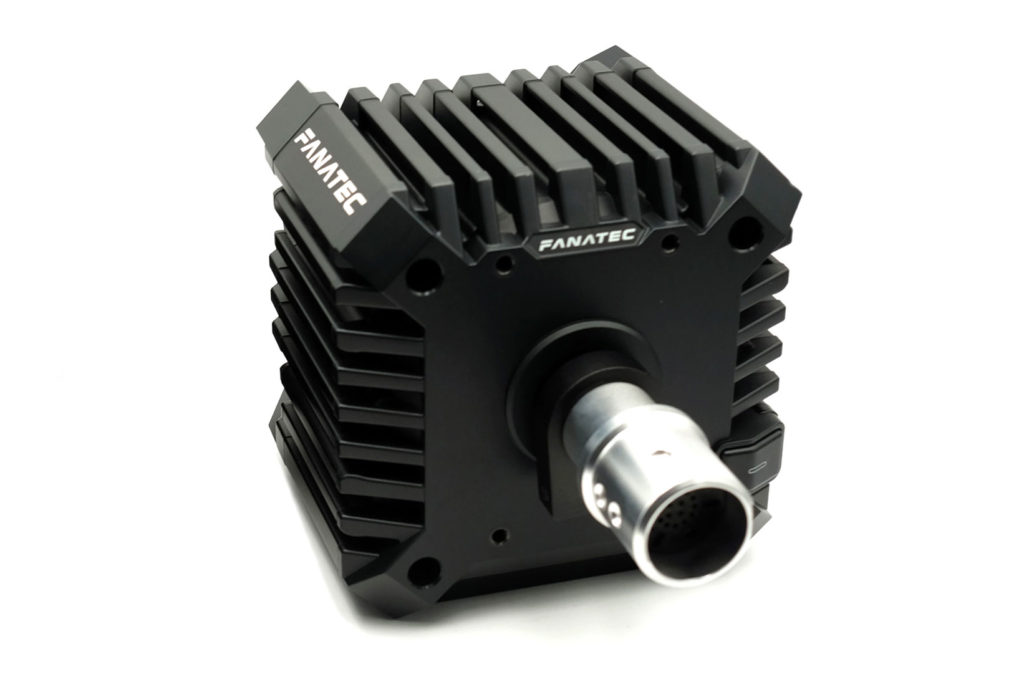
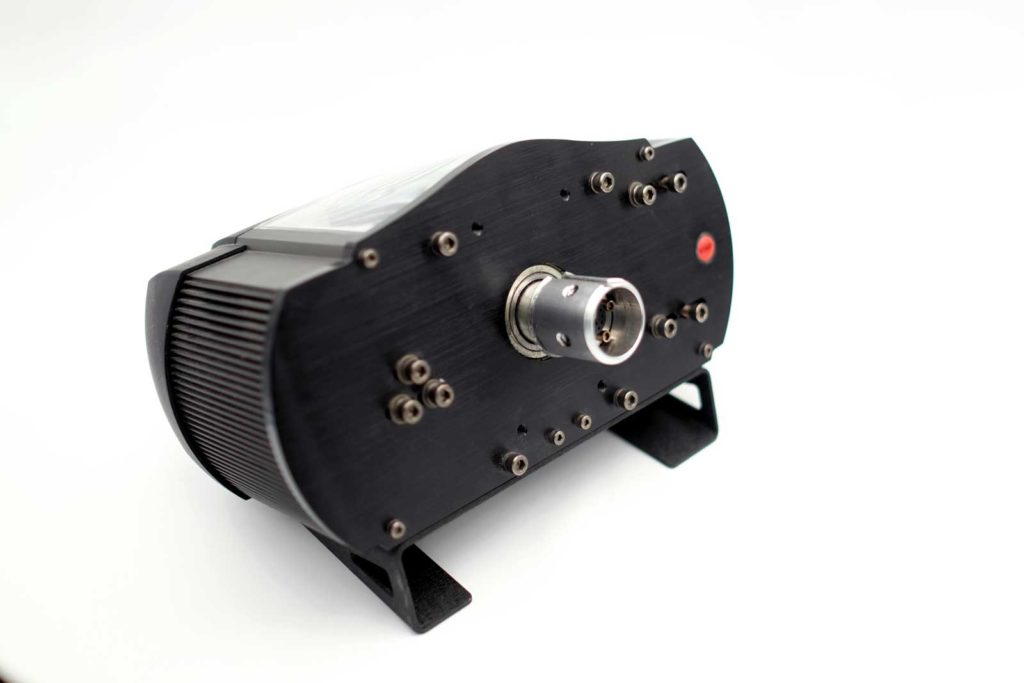
Compared to Fanatec’s CSW 2.5, which is no longer available, the base scores with a more direct and cleaner force feedback without the detour via the belt drive.
Is it worth switching: CSW 2.5 to CSL-DD with Boost Kit?
A question that many owners of a CSW 2.5 will ask themselves is whether it is worth switching to a CSL-DD. In my opinion, this is a borderline case. If it is somehow financially possible, it would probably make more sense to switch to a stronger direct-drive base, since the difference in maximum power is significantly greater here. However, if you mainly drive GT3/Formula vehicles and want to get the best price/performance ratio in this area, a change can still make sense. The CSL-DD simply offers better force feedback through finer details at a currently unbeatable price for a direct drive base.
Used purchase CSW 2.5 or CSL-DD without boost kit?
If you have to choose between a used CSW base and the CSL-DD, I would no longer recommend buying a CSW base. The current direct drive system is simply superior to the older belt drive of the CSW and for 350€ you get with the 5 Nm variant simply much more for your money including the manufacturer’s warranty by Fanatec and the later upgrade option through the Boost Kit.
FFB – Comparison: CSL-DD vs. Simucube Sport
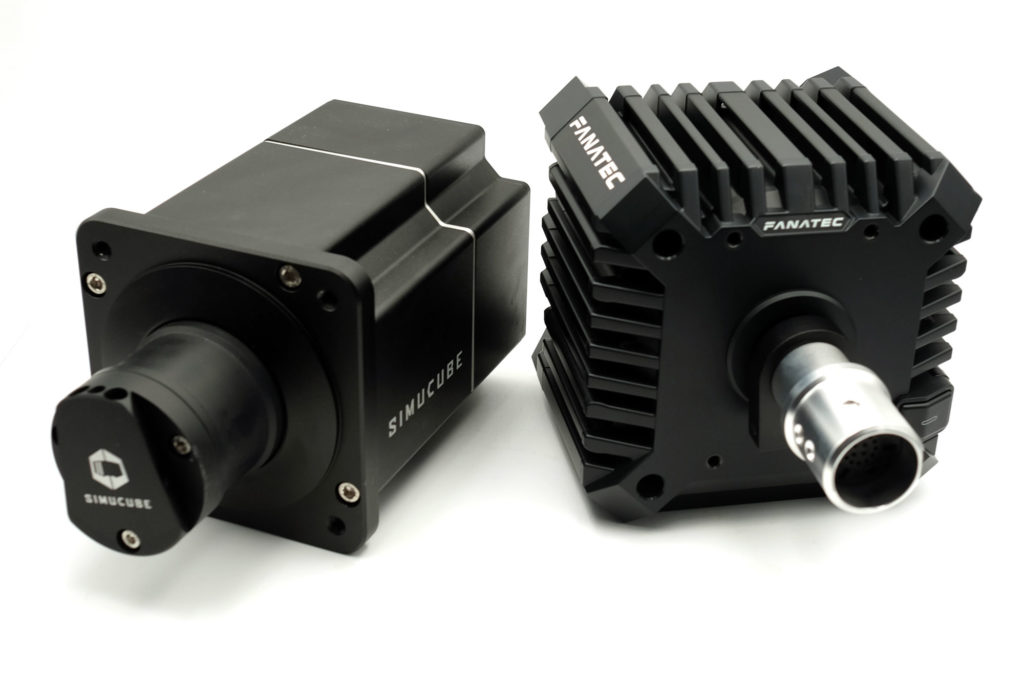
Compared with the much stronger (17 Nm) Simucube Sport (review), the CSL-DD does surprisingly well, especially in the range up to 8 Nm. In a direct(!) comparison, the force feedback of the Simucube Base subjectively feels a bit more direct and gives the impression that there are simply more generous reserves at all times. However, I do not dare to judge whether I could confirm this perception in a blind test or without the direct comparison.
The situation is different for the aforementioned vehicles with force feedback requirements beyond 10 Nm. Here, the stronger Simucube base clearly shows its strengths and limits the CSL-DD.
If money is no object and/or the primary requirement is very high force feedback settings, you should reach for a base like the Simucube Sport (pro) or a DD1 (2) from Fanatec. However, with a price that is about two and a half times as high, these strictly speaking represent a completely different category and are aimed at a different target group.
FFB: Boost Kit 180 – Yes or no?
As is often the case, the question of whether the Boost Kit is worth the extra 130€ is something that everyone has to decide for themselves. In my eyes, it clearly sets the CSL-DD apart from the previously available solutions in the range up to 500 € and offers significant added value. Three Newton meters more can prevent clipping in many a situation and I wouldn’t want to miss it, especially with larger and heavier steering wheels. It would have been desirable that the base gets a bit more power with the Boost Kit, but 8 Newton meters represent a successful intermediate step between the class around the CSW 2.5 and high-end DDs in my eyes.
Compatibility and steering wheel recommendation
Platforms: (data from Fanatec)
- PC: This Wheel Base is compatible with all available steering wheels to PC.
- Xbox: Compatibility can be achieved with separately available Fanatec Xbox One licensed steering wheels. Without an Xbox One® licensed steering wheel, this Wheelbase is not compatible with Xbox One® or the next generation Xbox console.
- PlayStation®: This product is not compatible with any PlayStation® system and cannot be upgraded.
Peripherals (data from Fanatec)
- Fanatec Podium steering wheels
- Fanatec ClubSport steering wheels
- Fanatec CSL steering wheels
- All Fanatec pedals (Adapter cables may be required for pedals without RJ12 connector)
- Fanatec ClubSport Shifter (including ClubSport Static Shifter Paddles)
- Fanatec ClubSport Handbrake V1 and V1.5
- Fanatec RennSport Cockpits
- ClubSport Table Clamp V2
- CSL DD Table Clamp
- Boost Kit 180
- Podium Mounting Brackets (the CSL DD includes M6 slot nuts for side mounting; the Podium Mounting Brackets require the use of M6 bolts and washers)
Steering wheel recommendation
My recommendation for use with the CSL-DD is clearly the lightweight Formula wheels and, due to the price, especially the McLaren Wheel V2 (review). The other steering wheels from Fanatec are of course also compatible, but the base is most likely to show its strengths with compact and lighter models.
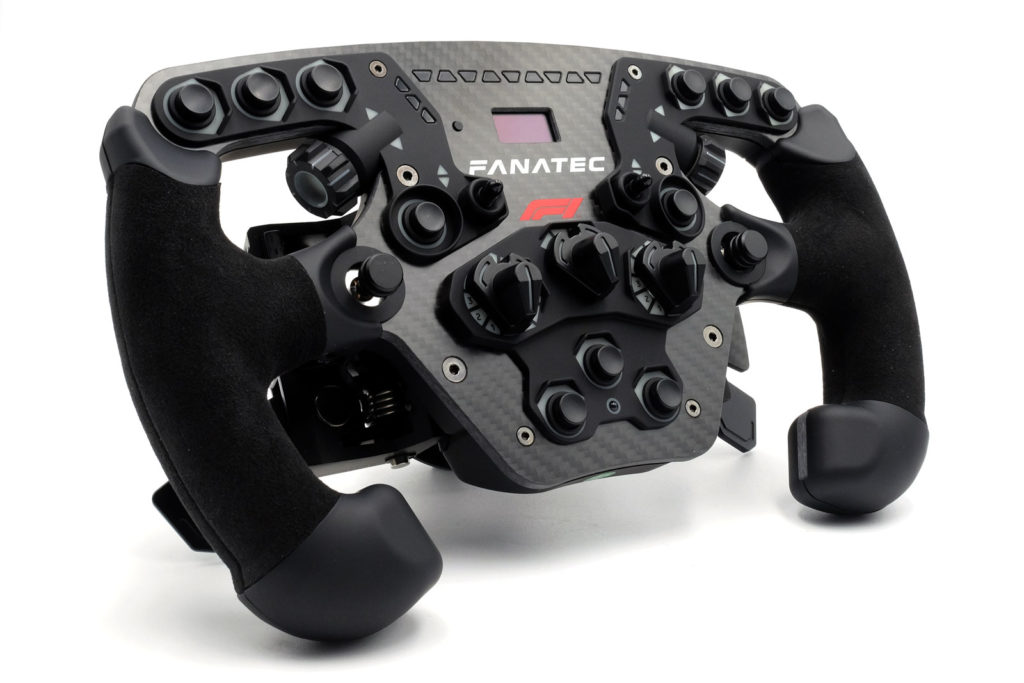

Accessories – The table clamp


The matching desk mount is currently available for purchase as an accessory for the CSL-DD. It angles the base by 15 degrees and ensures a secure hold on the desk for tabletops between 5 and 60 millimeters. Also included is a star-shaped handle for tightening the screw for faster and easier mounting. However, I have not personally tested the Table Clamp yet.
Conclusion – Fanatec CSL-DD


Overall, Fanatec has succeeded with the CSL-DD an excellent product for converters and beginners. With 5 Nm, the CSL-DD comes without a boost kit in the range of its indirect predecessors, CSL-Elite and the CSW 2.5-Base and offers all the advantages of direct drive technology at a lower price at the same time.
With the Boost Kit it then comes into the range, where in the currently most driven racing series (GT3 and Formula cars) hardly any wishes can remain open, only for vehicles with very high required FFB then a noticeable difference to the high-end systems is noticeable.
Overall, the CSL-DD is currently without alternative in my eyes in the range between 350€ and 500€ and the new unrestricted recommendation for this budget. The versatile range of peripherals and steering wheels within the Fanatec ecosystem round off the positive overall picture and additionally support my recommendation.
Pros
- Price
- Force Feedback up to 8 Nm…
- Mounting-options
- (Backward) compatibility
- Compact dimensions
- USB-C
- Fanless design
Cons
- Scope of delivery
- … Force Feedback > 8 Nm
- Availability
- QR1 system (but upgradeable in the future)


